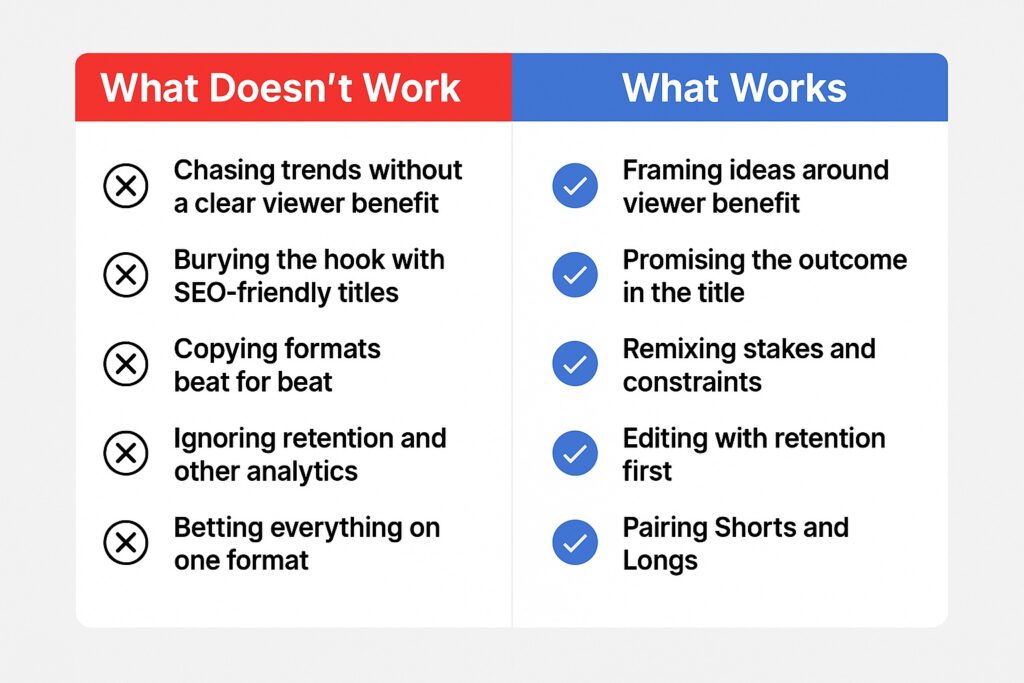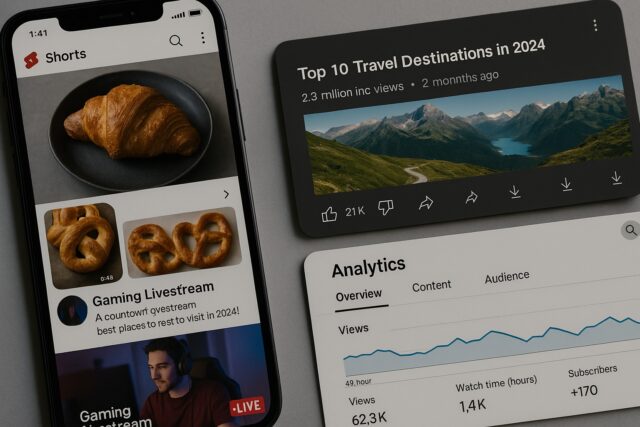Every YouTuber hits the wall. You upload, you check analytics, you tweak titles, but the next idea refuses to come.
Sometimes you’re out of inspiration. Sometimes the problem is subtler: the system that generates ideas has broken down.
This guide lays out a repeatable blueprint: one part research, one part audience psychology, one part history of how YouTube itself has changed.
By the way, if you want to stay connected and know everything about social commerce and never miss a beat, join Logie today! Click here
By the end, you’ll see that ideas are a natural byproduct of a good system.
1) Start with YouTube’s Blueprint, Then Make It Yours
YouTube’s official playbook suggests problem/solution content, reinventing old hits, and involving your audience. That’s a smart baseline.
But here’s where most creators fail: they treat those prompts as one-off sparks. Successful channels layer personal context on top.
The best creators don’t just say, “Here’s a trending challenge.” They ask, “How does this trend intersect with my audience’s world?” That intersection of trend and niche is the sweet spot.
2) Research
When creators dry up, it’s usually because they rely on inspiration, not process. Research needs to be habitual.
A weekly ritual might look like this: skim Studio’s Inspiration tab for content gaps, cross-check in Google Trends to avoid false positives, and then use a quick community poll to let viewers pick between two angles.

None of this takes more than half an hour, but it turns ideation into a renewable resource instead of a last-minute scramble.
The key is repetition. Creativity loves structure, not chaos.
3) Why History Still Shapes Today’s Ideas
YouTube is not static, and neither should your ideas be. A video concept that exploded in 2012 would tank today because the rules changed: YouTube shifted from rewarding clicks to rewarding watch time.
That means an idea is never just a topic; it’s also a retention plan.
Fast forward to now, when TV watch time is exploding. If you’re only scripting for mobile swipes, you’re leaving out viewers who sit down and expect longer arcs.
Every idea you draft should consider: Does this hook work on a phone and on a living room screen?
4) Thinking Across Formats
Most creators think of Shorts, long-form, and live as separate universes. The reality: they’re pieces of the same puzzle. A well-formed idea has multiple lives.
Take a fitness challenge: the long video shows the journey, Shorts capture daily struggles, and a livestream gives the audience a chance to ask questions in real time.
Same idea, different expressions. The genius isn’t in inventing 50 concepts, it’s in multiplying one strong idea across surfaces.

5) Reverse Engineering without Copying
Studying other creators is not stealing; it’s sharpening your filter. The highest earners log dozens of ideas, then whittle them down based on clarity, feasibility, and visual strength.
The trick is not to mimic their output but their method: generate more than you need, filter aggressively, and visualize the thumbnail before the script.
If you can’t picture the click, the idea isn’t ready.
6) The Pitfalls That Quietly Kill Ideas
Most creators don’t flop because their topics are boring; they flop because of hidden traps:
- They chase a trend without a clear viewer benefit.
- They bury the actual hook in SEO-friendly but bland titles.
- They ignore analytics that show exactly where people drop off.
The antidote? Keep the outcome front and center. Promise the result in the title, deliver it early, and use retention graphs as feedback, not judgment.
7) Evergreen Idea Paths That Work
Some formats never die; they just evolve. Problem/solution tutorials, constraint challenges, mini-series, and behind-the-scenes diaries remain staples because they map onto human curiosity.

The art is in combining them. A behind-the-scenes diary can morph into a challenge; a problem/solution video can evolve into a mini-series.
Once you recognize these as flexible templates, you stop asking “What should I make?” and start asking “Which variation fits this week?”
8) Filtering Ideas into “Ship It”
Not every idea deserves production, and that’s fine. The discipline is in saying no early.
Instead of gut feeling, score each idea against five filters: clarity of outcome, visual strength, retention potential, feasibility, and format fit.
Most ideas will fail two or three of these, and that’s a win. It means you’re protecting your calendar and bandwidth for the ones that can really move the needle.
Conclusion
Creators don’t run out of ideas. They run out of systems.
A balanced system looks like this:
- Weekly research, not random desperation.
- Ideas shaped by history and current format shifts.
- Cross-format thinking so one idea pays multiple dividends.
- Ruthless filtering that kills weak concepts before they waste your time.
Once you internalize this, the blank page stops being a threat. It becomes an open field.
You’re no longer waiting for inspiration to strike; you’re running a machine that produces it on schedule. And that’s when YouTube stops being unpredictable and starts feeling like momentum you can control.











